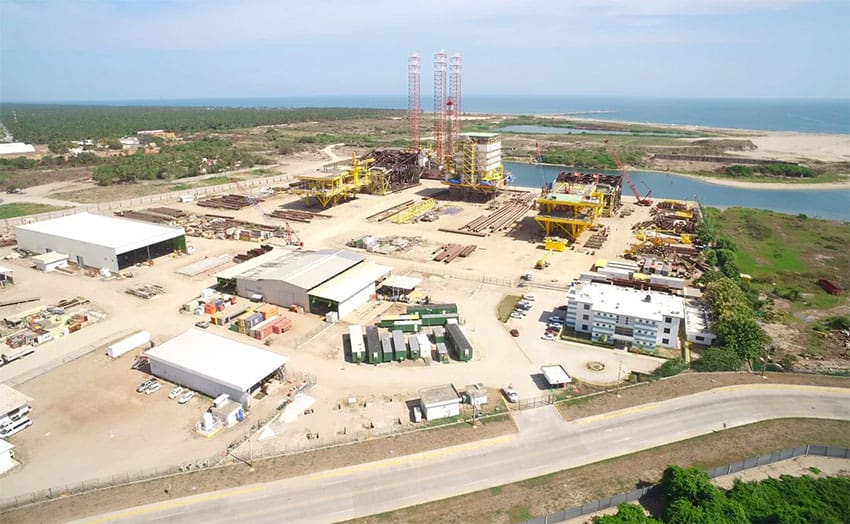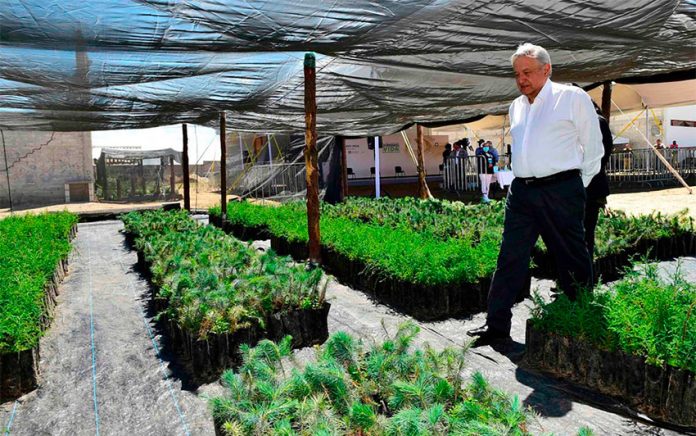Mexico’s refusal to mitigate the economic impact of the Covid-19 pandemic by boosting public spending is set to leave it with the lowest budget deficit among Latin America’s major economies this year — but that also means its recovery is lagging behind.
President López Obrador, an unlikely fiscal conservative, is fiercely opposed to taking on additional debt. His stimulus plan is equivalent to just 1.1% of GDP, less than a quarter of the average in Latin America according to the UN’s Economic Commission for Latin America and the Caribbean.
Mexico has spent an eighth of what the region’s biggest economy, Brazil, has spent on pandemic help as a proportion of GDP, according to the commission’s data. And most was in the form of loans to small businesses, not grants.
López Obrador has continued to pay the social benefits that are a hallmark of his government, boosting his popularity even though Mexico has notched up the world’s fourth-highest Covid-19 death toll. He has also plowed ahead with a handful of pet infrastructure projects and with aid for the struggling state oil company Pemex. But he has resisted spending more in other areas.
The president justifies his penny-pinching stance as a mixture of principle and necessity. He believes that his government should avoid increasing public debt which, he fears, future generations would have to finance. He abhors state-funded bailouts, which he argues have in the past turned private debts into a public responsibility.
Since taking office in 2018 he has pursued austerity policies in a bid to free up cash for his priority social and infrastructure projects. He says his crusade against profligacy and corruption has so far saved 1.5 trillion pesos (US $75 billion).
His stance leaves Mexico with a healthier budget balance than other economies in the region, Joan Domene at Oxford Economics noted: “By not spending much on pandemic relief measures, Mexico will be very close to running primary surpluses in 2020 and 2021.”
That will hold down its debt levels. Mexico’s general government gross debt-to-GDP ratio is forecast to remain steady year on year at 65.5% in 2021, according to the IMF. By comparison, in Brazil the ratio is forecast to rise more than 1 percentage point to 102.8%.
But López Obrador’s fiscal restraint is ill-timed, economists argue. The IMF and World Bank have for months been urging nations to borrow to tackle the economic crisis caused by the pandemic, despite the long-term problem of higher public debt that this will leave them with.
“We think they could have done more — Mexico has access to credit and the cost of financing for Mexico in dollars is at historically low levels,” Alejandro Werner, the IMF’s western hemisphere director, said recently. That left Mexico with “an enormous growth challenge in the medium term,” he added.
Brazil’s increased spending is set to help its economy through the crisis better than Mexico’s — Brazil will regain its pre-pandemic GDP level by 2023, according to IMF forecasts, but Mexico could take until 2026.

Mexico’s economy was contracting even before Covid-19 struck and IMF estimates suggest that it suffered the third-biggest contraction among Latin America’s major economies in 2020. The economy has shrunk year on year for six straight quarters, according to the state statistics institute.
Mexicans themselves are gloomy. In a new poll, 59% felt the economy was faring badly or very badly. Just 14% said it was doing well.
Christopher Garman, managing director for the Americas at consultancy Eurasia Group, said in a recent research note that policies hostile to private investors — Mexico has canceled a partially-built airport and brewery and abruptly changed energy sector rules, for example — are also likely to hold back growth.
Mexico’s economy will get an indirect boost if Joe Biden launches further stimulus measures in the U.S., its biggest trading partner. Furthermore, its restraint on debt has reduced the risk of a credit-rating agency downgrading it to junk — a threat that had once appeared inevitable this year — analysts say.
“A year ago, Mexico was looking worse than every other country in the region,” said Domene. “Now it’s not that bad.”
Andrés Abadía at Pantheon Macroeconomics called a downgrade avoidable, though. He added: “The situation could worsen faster than elsewhere.”
Even if Mexico hits the government’s target of 4.6% GDP growth in 2021 — well above the IMF’s expectation of 3.5% — state revenues are under increasing strain and, with midterm elections due in June, López Obrador will be unwilling to increase taxes.
Mexico received a public finance boost in 2020 because the tax authority squeezed longstanding debts from large companies, but that feat will be hard to sustain, according to analysts. Pemex remains a drain on state finances and Mexico has burned through most of its budget stabilization fund known as FEIP, a rainy-day savings pot.
“We think the FEIP will have run out in December [2020],” said Mariana Campos at México Evalúa, a think tank.
Meanwhile, a bonanza that the government had a few months ago been set to enjoy from the Bank of México’s surplus on its dollar reserves has not materialized. Analysts had believed it could total as much as $25 billion, but the recent recovery in the peso may erode it.
“The way things are going, it’s probable there won’t be any windfall for the government,” said one former senior public official.
That leaves López Obrador facing dwindling revenues, so he is unlikely to change his stance on Mexico’s fiscal policy.
As Domene put it: “You only need money if you plan to spend.”
© 2021 The Financial Times Ltd. All rights reserved. Please do not copy and paste FT articles and redistribute by email or post to the web.
